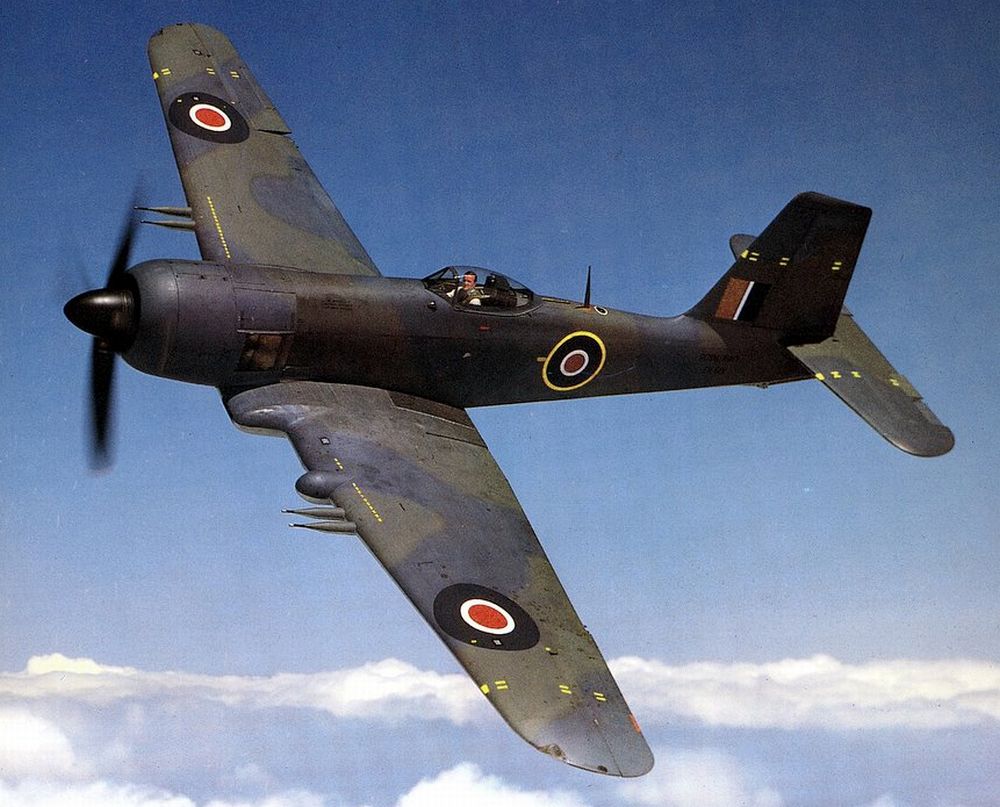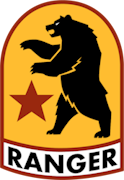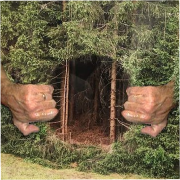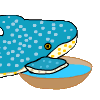|
FrangibleCover posted:
See, that is neither short nor stubby. It's just kind of a mess. (Technically, the size of the vertical fin suggests that actually, it is a bit short in aerodynamic terms, but gently caress that, plane is still a monster.)
|
|
|
|

|
| # ? Jun 7, 2024 05:13 |
|
Shimrra Jamaane posted:What was the worst WWII plane that they made a lot of? Per nation or between all of them?
|
|
|
|
Shimrra Jamaane posted:What was the worst WWII plane that they made a lot of? The Breda Ba.88 Lince was so underpowered that the sand filters the Italian air force added so that they could fly in North Africa made most of them unable to take off, and the ones that took off weren't able to turn.
|
|
|
|
Shimrra Jamaane posted:What was the worst WWII plane that they made a lot of? Performance-wise, I'd say the Polikarpov Po-2. It was so slow and lovely that axis interceptors could barely fight the drat things since they'd stall out trying to position for a shot, but on the other hand the VVS leaned right the gently caress into how slow and lovely it was, and used it as a night bomber where they did their bombings while gliding without the engine running. the same thing applied during the korean war where sabres couldn't fight it because they'd stall out, and because it was basically a box kite with a lawnmower motor it had a tiny radar signature and as such ended up sneaking over US airfields and dropping bombs on parked planes.
|
|
|
|
Shimrra Jamaane posted:What was the worst WWII plane that they made a lot of? Blackburn Roc. Like Defiant, but shittier.
|
|
|
|
Shimrra Jamaane posted:What was the worst WWII plane that they made a lot of? Does the Ohka count? https://en.m.wikipedia.org/wiki/Yokosuka_MXY-7_Ohka Or the Tsurugi https://en.m.wikipedia.org/wiki/Nakajima_Ki-115 Fangz fucked around with this message at 01:36 on Feb 5, 2019 |
|
|
|
The Fairey Battle was pretty poo poo, had over 2000 built, and performed so badly during the Battle of France that the production line was ceased entirely and immediately relegated to training. Granted, a lot of losses are due to how it was used, rather than the plane's design itself, but it only carried 2 guns, one in the rear and one in the wing, and the design proved to be obsolete by the time of the "Phoney War".
|
|
|
|
Shimrra Jamaane posted:What was the worst WWII plane that they made a lot of? So far, so normal for aircraft from that sort of period in the cauldron of the early war battle for the air. The Battle's real crime though was that it was an advanced metal monoplane powered by a Merlin I and therefore every single one of the 2200 Fairey Battles built could have been a Hurricane. And what a difference that would have made. StandardVC10 posted:See, that is neither short nor stubby. It's just kind of a mess. E: poo poo, Ninja'd
|
|
|
|
The Fairey Swordfish should, by all rights, be bad. It’s a biplane that was obsolete before the start of the war. Yet it was produced throughout the war and destroyed two battleships and more Axis shipping than any other model of plane.
|
|
|
|
Other possible contenders include the Brewster Buccaneer (771 were made, somehow,) Hawker Henley (didn't even work as a target tug,) and Messerschmitt Me-210 (Goering claimed it shortened his life.)
|
|
|
|
quote:A lack of skilled workers to assemble the engines, depletion of high-strength alloy stocks for crankshafts and cylinder blocks, particularly the lack of nickel steel, as well as a decrease in engine oil quality all affected engine production and development.
|
|
|
|
The Lone Badger posted:You'll see something like this paragraph in any discussion of any Axis vehicle. Did any Allied vehicle suffer in quality from material shortages the same way, or did they have enough of most everything? You see the possibility planned for to a pretty significant degree - steel pennies, for example - but I don't know to what degree actual shortages materialized.
|
|
|
|
The Allies did not have enough of everything. Substitutions were made. Silk parachutes became canvas then nylon. Natural rubber was replaced with synthetic rubber. Wood was largely used for the structure of the Mosquito rather than steel. Copper for the Manhattan Project’s Y‐12 facility was replaced by silver on loan from the Treasury. Many of the substitutions turned out to be better than the original material. I’m sure there were teething issues but I don’t know of them offhand, other than I suppose the story of how Silly Putty came to be—it wouldn’t have made a very good tyre, but no one actually made a tyre out of it. quote:One of the largest savings of scarce materials during World War II was accomplished through standardization of models, equipment and parts. This approach was broadly applied throughout industry with encouragement by the Conservation Division of the War Production Board. The advantages of standardization were shown in savings of materials; in reduced need for varieties of special-purpose machines, tools, dies, jigs and fixtures; in reduced inventories in stores and spare-parts houses; in accelerated output and improved labor productivity. quote:It is almost axiomatic in engineering design that no material is wholly indispensable. Some substitute almost invariably can be found, and sometimes the substitute proves to have attractive qualities of its own. Thus, when German industry was faced with a shortage of copper, and could not obtain enough of the metal to use it for rotating bands on artillery shells, a “sintered” powdered iron impregnated with paraffine was substituted. This material was more costly than copper, in terms of manpower, but it caused less wear in large gun barrels. quote:Seventy-three technical committees on federal specifications had been established as early as 1942. W.P.E. assembled a file containing 40,000 such specifications and issued mandatory modifications and “emergency alternate specifications” by the hundreds. Thus, the use of lead-base babbitt metal instead of tin-base metal in merchant ships saved 500 long tons of tin a year. Some of the piping on vessels was made of steel instead of brass, thereby saving 15,000 tons of copper and brass each year. A shoe sole treating formula, used by the Quartermaster Corps, was applied to civilian shoe soles as well, extending each month the life of about 2,000,000 shoes by 25 per cent. Paper clips in government offices no longer were required to have a copper wash, and substitute fibers were used in government mimeograph paper to save 385,000 pounds of abaca. Platystemon fucked around with this message at 02:33 on Feb 5, 2019 |
|
|
|
How did French planes do during WWII?
|
|
|
|
The wood construction of the Mosquito was an evolution of techniques De Havilland had developed before World War II, so while metal shortages were a factor in its design they weren't the only factor, I don't think.
|
|
|
|
Squalid posted:How did French planes do during WWII? Pretty terribly, production quality was really low on a lot of planes, to the point where some models just sat at manufacturing plants or at airfields because they either weren't accepted for military use, or problems developed after a short amount of usage, poo poo like faulty engines or bad wings. This was a major issue that, iirc, was mainly due to the fact that France nationalized all their production, and changing demands plus changing work methods/ethics/etc made QA very hard. Even still, you had some planes like the MS-406/410 or the D.520 that managed to account fairly well for themselves when they got in the air, and foreign service of the MS-406, like the Finnish varient called the Morko Morane, did well against the Russians in the Winter War. Edit: The LeO 45 series was also pretty good. Oh, forgot the Bloch planes, here's the basic blurb on the 151: quote:Operational history 
Jobbo_Fett fucked around with this message at 02:35 on Feb 5, 2019 |
|
|
|
StandardVC10 posted:The wood construction of the Mosquito was an evolution of techniques De Havilland had developed before World War II, so while metal shortages were a factor in its design they weren't the only factor, I don't think. I’d say that allowing the use of different production resources was more important than the change in raw materials. That is, the piano factories that were cranking out Mosquitos would not have been able to make metal planes.
|
|
|
|
Jobbo_Fett posted:Pretty terribly, production quality was really low on a lot of planes, to the point where some models just sat at manufacturing plants or at airfields because they either weren't accepted for military use, or problems developed after a short amount of usage, poo poo like faulty engines or bad wings. This was a major issue that, iirc, was mainly due to the fact that France nationalized all their production, and changing demands plus changing work methods/ethics/etc made QA very hard. This performance may explain why I can't recall ever hearing anything at all about the French air-force during the German invasion. Was it just a total nonentity during the war?
|
|
|
|
Squalid posted:This performance may explain why I can't recall ever hearing anything at all about the French air-force during the German invasion. Was it just a total nonentity during the war? No, the French Air Force was very much around, just that it never had the numbers in the air as it did on paper on the ground. The Free French Air Force had a unit in Russia that did well, so much so that Stalin let them go back to France with their Yak-9s.
|
|
|
|
Gervasius posted:Blackburn Roc. Like Defiant, but shittier. I'd add the Blackburn Botha, torpedo bomber and naval recon aircraft. First flying in 1936, it was so lovely that the test crews said it was useless for recon, as it had awful sight lines; flight tests also showed lateral stability problems which were never fixed. They were put into production at Blackburn's two factories and 580(!) were made, but in 1940 they were seen as so dangerous to fly while being underperforming and useless at the whole patrol/recon thing, that they were only put into service in four squadrons - replacing the completely desperate stop-gap Avro Ansons. By the end of 1940 fatal accidents saw the type withdrawn to training units where they continued to kill allied aircrews. FAUXTON posted:Performance-wise, I'd say the Polikarpov Po-2. It was so slow and lovely that axis interceptors could barely fight the drat things since they'd stall out trying to position for a shot, but on the other hand the VVS leaned right the gently caress into how slow and lovely it was, and used it as a night bomber where they did their bombings while gliding without the engine running. I think it is still literally the most produced aircraft of all time, tho The Avro Anson was a bad combat aircraft, but a great multi-engine trainer, produced till 1947 Platystemon posted:The Fairey Swordfish should, by all rights, be bad. It’s a biplane that was obsolete before the start of the war. When your enemy has no airplanes at all to field against you, why mess with what works
|
|
|
|
Platystemon posted:The Fairey Swordfish should, by all rights, be bad. It’s a biplane that was obsolete before the start of the war.
|
|
|
|
I like the idea of "Hey, this plane is dangerous, let's stop using it to fight and give it to people learning to fly!"
|
|
|
|
pthighs posted:I like the idea of "Hey, this plane is dangerous, let's stop using it to fight and give it to people learning to fly!" Look if you survive training then obviously you're a good enough pilot any Germans you encounter will be no problem, when there actually are Germans in the sky.
|
|
|
|
I think the best use of that plane would have been to sell it to the Germans.
|
|
|
|
If the Allies had correctly recognized the German thrust through the Ardennes in 1940 and sent absolutely everything they had as far as air power to go pound them as they crossed the Meuse would that have made a significant difference or was German air superiority strong enough to hold them off?
|
|
|
|
ponzicar posted:I think the best use of that plane would have been to sell it to the Germans. Good news! 
|
|
|
|
Shimrra Jamaane posted:What was the worst WWII plane that they made a lot of? You’re favorite plane!
|
|
|
|
goatsestretchgoals posted:Obvious followup question: what was Omaha Beach like? You're right that SPR is my mental image of it, teach me otherwise. Let's take a look!    So right from the start, you can see that Omaha is a fairly wide, flat, and shallow beach. This made it an ideal place for landing craft, since it allowed them to get as close to the shore as possible before dumping off their load. However, as you can see, the beach is also a natural kill zone—while there were no giant concrete bunkers on the bluffs (the ones in SPR are actually modeled off an artillery observation bunker at Pointe du Hoc), the bluffs had a bunch of trenches and fortified positions where machine guns could fire straight down onto the beach. There were also fortifications on the beach, like so:     (Last two are from Utah, but similar fortifications were built on Omaha) These bunkers are far less imposing than the SPR creations, but they were highly effective. They were angled so that thick concrete walls protected them from direct fire from the sea, and had machine guns and anti-tank guns that could fire effectively down the beach. They were also built in series so that the firing arcs from each bunker could cover the blind spot of the next bunker, so taking even one was an exceptionally arduous challenge. So with that in mind, let's get to the famous picture, the one everyone knows:  It's about six in the morning on June 6th, 1944. You've just spent the past couple hours on a relatively small boat that's been rocking about in the surf, ingesting seawater and chomping down anti-seasickness pills. You are cold and miserable, and you know there's a good chance you might be about to die. Before you is Omaha Beach. You are in the 1st Infantry Division, the Big Red One. You've been assigned to the sector of the beach called 'Easy Red', and your mission is to secure the draw that leads out of the beach. Capturing it is critical: the draws are the only way off the beach, and every moment it remains in enemy hands is a moment the Germans can sit on the bluffs and shoot you and your buddies to poo poo with heavy machine guns, mortars, and artillery.  Of course, that's if you've landed in the right place at all. The current is strong, and many boats have gone off course. While you've trained and prepared to hit one particular spot of beach, there's a good chance you might have drifted off course and landed at Fox Green or Fox Red and gotten mixed in with those assholes from the 29th ID, putting you out of command and in less than familiar territory. But you're hoping that won't be a big deal. You've got tank support, after all, the DD Shermans with their canvas sides that allow them to float in the water. The Air Force has also prepared a massive aerial bombardment, which with luck should blast the Germans right off the bluffs and allow you to simply walk onto the beach untouched. What you can't know, however, is that things have already started to go wrong. The DD Shermans were launched three miles from the beach, a far greater distance than they were designed to traverse. When the current pushed them off course like your Higgens boats, many tried to fight against the current and were swamped by the tide, with dozens of armor crewmen drowning in their tanks. The few that didn't fight the current will be landing on the beach far off course, and will be in no position to help you. Likewise, the bombardment has done little to no damage against the Germans. While the B-26 Marauders assigned to support Utah Beach were allowed to fly parallel to the shore and managed to knock out a crucial German fortification, the B-17s assigned to bombard Omaha are flying in nearly perpendicular to the German positions. Out of concern for hitting friendly troops, the vast majority of the bombers will drop their loads too late, ravaging the French countryside but leaving the German positions intact. And worst of all, while other beaches are either lightly defended or are defended by thinly reinforced units filled with barely adequate replacements, you'll be fighting the relatively fresh and decently trained 352nd Infantry Division, and they won't give up easy. But there's no time to worry about that now. You've hit the beach. And it's absolute hell. Right from the start, the Germans are pouring as much fire as they can at the approaching landing craft. Many of the LCVPs will get hit by mortars or anti-tank guns and burn abandoned on the beach, while others will disgorge their troops far too far from the shore out of fear of meeting the same fate. The surf is filled with half-submerged obstacles designed to wreck the landing craft: hedgehogs,, Belgian Gates, and logs with mines attached to them. They provide next to no cover at all, but they're the only source of protection along the entire beach. Everything is going wrong. You're on the wrong sector of the beach, other units aren't where they're supposed to be, some haven't landed at all, and you have no tank support. Ships offshore are firing bombardments, but the vast majority are too far out to aim accurately. Many men are frozen in fear, others are pinned down by fire. The thick wall of obstacles prevent many from advancing, and the engineers carrying the explosives to remove them are either in the wrong place, haven't landed yet, or are already dead. But you push forward, because you can do nothing else. Eventually, you make it to the shingle: a natural sea wall made up of small stones deposited by the tide near the base of the cliffs.  There, along the only shelter to be had along the entire beach, units try to reorganize, assess casualties, and collect their bearings. It's not easy: officers have taken heavy casualties, many radios have been destroyed or are non-functional, and those bastards up on the bluffs keep shooting at you. In many places, the fire is so thick that it's impossible to advance at all, and troops are forced to shelter in place for hours under the incessant MG fire. Tanks begin to make it onto the beach, but the thick layers of obstacles prevent them from moving far, and they take heavy losses from anti-tank guns. Before long, the beach becomes covered in wrecked landing vehicles, burning tanks, and dead and dying soldiers.  As the day goes on, the beach becomes even more of a disaster. The timetable is completely off, and reinforcement waves arrive to find that few, if any, of the units in front of them have managed to accomplish their initial objectives. Bulldozers and anti-aircraft vehicles arrive on the beach, wholly unsuited for the combat taking place in front of them. More and more men become bunched up amidst the obstacles and along the shingle, and for a few, horrifying hours it appears that the Germans may be able to stop the invasion in its tracks. But then, things start moving. While the battleships and cruisers far out to sea remain ineffective, several destroyers begin sailing in suicidally close to provide direct fire support on the beach. One, the Frankford sails within a thousand yards of the shore, firing 5" shells at point blank range into German fortifications. A pair of M15 and M16 AAA vehicles that landed amidst the chaos pour fire into a bunker defending one of the draws, and manage to plant several 37mm AA shells directly into the firing slit. Hulking LCTs sail directly onto the beach in spite of oncoming fire, disgorging Sherman tanks directly onto the sand. And all along the beach, teams of infantry desperately advance on the fortified German positions, doing anything and everything to advance, yard by yard. Going over the sea wall, destroying the obstacles before them, and advancing up into the bluffs, isolated companies of infantry are able to find cover amongst the ragged terrain, and finally begin to wear down the German defenses. Before long, the 352nd begins to call for reinforcements, but there's none to be had—and soon, infantry from the 5th Ranger Battalion are able to summit the bluffs and advance several hundred yards inland. Two and a half hours after you landed on the beach, the first draw allowing vehicles to exit the beach is taken by American troops. Four hours in, LCT 30 sails directly onto the sand, beaching itself, crushing obstacles beneath it, and firing every weapon it has at the enemy, while destroyers behind it pound fire into the defending Germans, providing vital cover for engineers to clear obstacles. By 1100, much of the beach has been taken, though many German pockets still remain entrenched atop the bluffs. By the end of the day, the beach has been taken at heavy costs. Between 2,000 to 5,000 troops are dead, dying, wounded, or missing, and infantry has only been able to push a few hundred yards out of the beach. The delicate timetable is in shambles; it will take some time for the beach to be cleared of obstacles and for reinforcements and supplies to be effectively landed as planed. But the Germans have been hurt just as badly, and once pushed from the beach have no ability to resist the landings. Where Saving Private Ryan gets it wrong is that Omaha Beach wasn't a quick, bloody action, with infantry charging concrete bunkers. It as a long, slow, confused meatgrinder, with troops forced to advance agonizingly slowly against heavy German resistance, and success was due not just to individual courage of infantry units, but a sustained combined-arms effort where heroism and initiative was able to overcome both the German resistance and the absolute confused mess that was the landings. Anyway, hope that paints a slight picture of how utterly hosed it was be on Omaha Beach. Acebuckeye13 fucked around with this message at 05:52 on Feb 5, 2019 |
|
|
|

|
|
|
|
Acebuckeye13 posted:Let's take a look! Now do Utah Beach “They landed in the wrong spot but it actually worked out better that way so yay.”
|
|
|
|
|
|
|
|
FAUXTON posted:Performance-wise, I'd say the Polikarpov Po-2. It was so slow and lovely that axis interceptors could barely fight the drat things since they'd stall out trying to position for a shot, but on the other hand the VVS leaned right the gently caress into how slow and lovely it was, and used it as a night bomber where they did their bombings while gliding without the engine running. I'd go with the Fairey Battle over the Po-2. The Battle made the RAF less effective in direct proportion to the number built. The Po-2 found a niche where it was useful. Night harassment bombers operating from forward airfields are exactly where you want you box kites with an outboard motor. Keeping the enemy from getting a good night's sleep in moderately useful. But their real impact would have been preventing any German unit in range from firing up a generator, stringing some lights, and fixing Panzers all night. mllaneza fucked around with this message at 06:56 on Feb 5, 2019 |
|
|
|
the 21st c is not unique. https://twitter.com/gin_and_tacos/status/1092467266422218752
|
|
|
|
Acebuckeye13 posted:Amazing Omaha Beach Stuff fartknocker fucked around with this message at 07:42 on Feb 5, 2019 |
|
|
|
Shimrra Jamaane posted:Now do Utah Beach Pretty much  But for those who don't know: But for those who don't know:  Utah was far more open than Omaha, so the Germans were more heavily dependent on those big concrete pillbox complexes to provide fire down the beach. On the morning of June 6th, however, a bombing raid of B-26 Marauders flew along the beach and bombed the poo poo out of one of the complexes, completely disabling it. And then later, when the 4th Infantry Division began landing, it turned out the current had carried them a fair distance away from where their planned landing beach had been—but as luck would have it, they'd landed directly on the area the disabled fortifications had been covering, and the German commander had withdrawn many of his troops to go deal with the paratroopers mucking about behind the lines. As a result, 4th ID was able to effectively walk onto the beach without much difficulty, and cleared most of the German resistance without major casualties. e: Normandy is a really cool place and I definitely recommend visiting it. plus Bayeux has a Acebuckeye13 fucked around with this message at 07:53 on Feb 5, 2019 |
|
|
|
why did they send national guard units in on the first wave at omaha? it seems like an odd decision, on the face of it oh, and i've wondered this since i first read about ww2 as a kid - what's the biggest Allied amphibious landing that got pushed back into the ocean? dieppe? did any of the island-hopping landings just completely fail? anzio and omaha and all the rest seem to end up in the win column for the allies. it's kind of surreal, honestly. i guess it's that order-of-magnitude edge in production edit: tarawa was the other example i was trying to remember the name of, where it's presented as a huge disaster but we did, like, win. which sometimes seems to get a bit taken for granted by us americans oystertoadfish fucked around with this message at 08:29 on Feb 5, 2019 |
|
|
|
Acebuckeye13 posted:Four hours in, LCT 30 sails directly onto the sand, beaching itself, crushing obstacles beneath it, and firing every weapon it has at the enemy, while destroyers behind it pound fire into the defending Germans, providing vital cover for engineers to clear obstacles. I hate to be the party pooper but I thought the LCT 30 bit sounded quote:The outcome of LCT 30’s landing? According to the Flotilla Commander’s action report, LCT 30 discharged its load of anti-aircraft half-tracks and, while retracting from the beach, was struck by an enemy shell knocking out all engines and flooding the engine room. It also hit an underwater obstacle, and the boat was abandoned. One of the crew was killed.
|
|
|
|
The mention of Kawasaki, along with $1 beers, prompted a question of probable faulty premises: why was it American motorcycle companies seemed to almost exclusively produce motorcycles, while bikes in other countries were made by larger industrial firms like Suzuki, BMW, Honda, etc? I vaguely recall Daimler/MB did as well? But there’s also non-American counter examples like Triumph and maybe the Italian companies as well? And I’m even more ignorant when it comes to the Soviet front; and maybe Harley and Indian actually were building tanks; and, in conclusion, please use my rambling and ignorant questions as an opportunity to post cool and informative poo poo.
|
|
|
Don Gato posted:Look if you survive training then obviously you're a good enough pilot any Germans you encounter will be no problem, when there actually are Germans in the sky. Top-hole. Bally Jerry, pranged his kite right in the how's your father. Hairy blighter, dicky-birdied, feathered back on his Sammy, took a waspy, flipped over on his Betty Harper's and caught his can in the Bertie.
|
|
|
|
|

|
| # ? Jun 7, 2024 05:13 |
|
SeanBeansShako posted:Top-hole. Bally Jerry, pranged his kite right in the how's your father. Hairy blighter, dicky-birdied, feathered back on his Sammy, took a waspy, flipped over on his Betty Harper's and caught his can in the Bertie. I understand the individual words but what are you saying
|
|
|










































